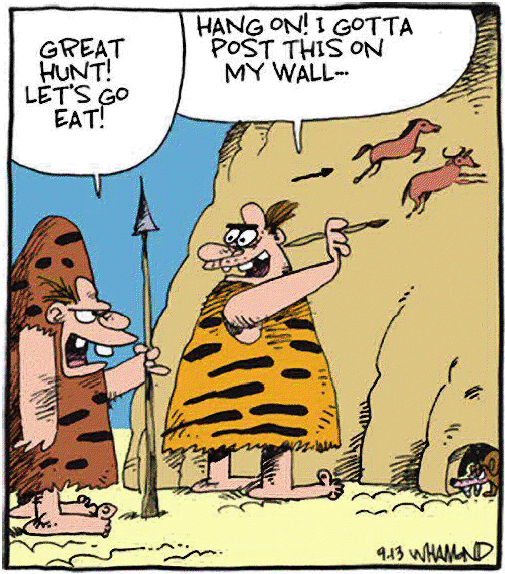The debate surrounding the roles of climate and humans in the megafauna extinctions remains contentious (Lorenzen et al, 2011). Up until the 1960’s, conventional wisdom held that the megafauna
were victims of a warming climate at the end of the last Ice Age (Levy, 2011). In an age old story, rising temperatures caused changes in vegetation ranges and community compositions;
thereby altering habitats. The herbivores that relied on these habitats then were thought to have died out, followed by the predators that hunted them.
But today, many scientists believe that Stone Age hunters
expanding across the globe were responsible for these
extinctions. This theory was first conceived by naturalists in the 19th century (amongst competing theories of geological and slow 'natural changes' of the environment) and pioneered by Paul Martin in the 60’s (Martin and Klein, 1984). He saw a
pattern of human arrival in each new continent and the rapid extinction of its
native megafauna shortly after. He named this the “blitzkrieg” or overkill
hypothesis.
The overkill hypothesis works based on the assumption that these prehistoric people had the ability to kill off the megafauna, and also that these species coexisted with humans. Big names of the 19th century such as Wallace, Darwin, Cuvier, Flemming, Lyell, Buckland, Owen and Agassiz argued fiercely on the topic, but came to no consensus (Martin and Klein, 1984).
"We live in a zoologically impoverished world, from which all the largest, and fiercest, and strangest forms have recently disappeared"
"We live in a zoologically impoverished world, from which all the largest, and fiercest, and strangest forms have recently disappeared"
-Alfred Russel Wallace (1876)
Martin argued that the megafauna (mammals exceeding 44kg) survived the last and previous glaciations, only to die out shortly after. Outside of Africa, most genera of large mammals lost became extinct in the last 100,000 years. To Martin, the extinction pattern didn't track changes in climate (Martin and Klein, 1984). Martin's focus was broadly on the Clovis people, descendants of East Asians, they met woolly mammoths and rhino in Siberia on their journey to North America, where Martin envisioned they met a land full of unsuspecting and unprepared lunch.
 |
| Source: Prehistoric Cultures - University of Minnesota Duluth |
A striking example of this is provided by palaeoecologist Guy Robinson. Bits of fossilised pollen found in Shasta sloth coprolites (fossil dung) in Rampart Cave seem to prove, at least in this instance, that the habitat outlived the animal itself (Robinson et al., 2005). The dung contains globe mallow, Ephedra and cholla cactus spores, indicating these plants made up the diet of the sloth. So if the climate had changed, these plants should have gone extinct, or at the very least moved, to have prompted the death of the sloths that subsisted on them. But the same plants grow near the caves today (Robinson et al., 2005). This doesn't fit with the climate theory that relies on declining habitat as the force driving extinction (Levy, 2011).
No comments:
Post a Comment